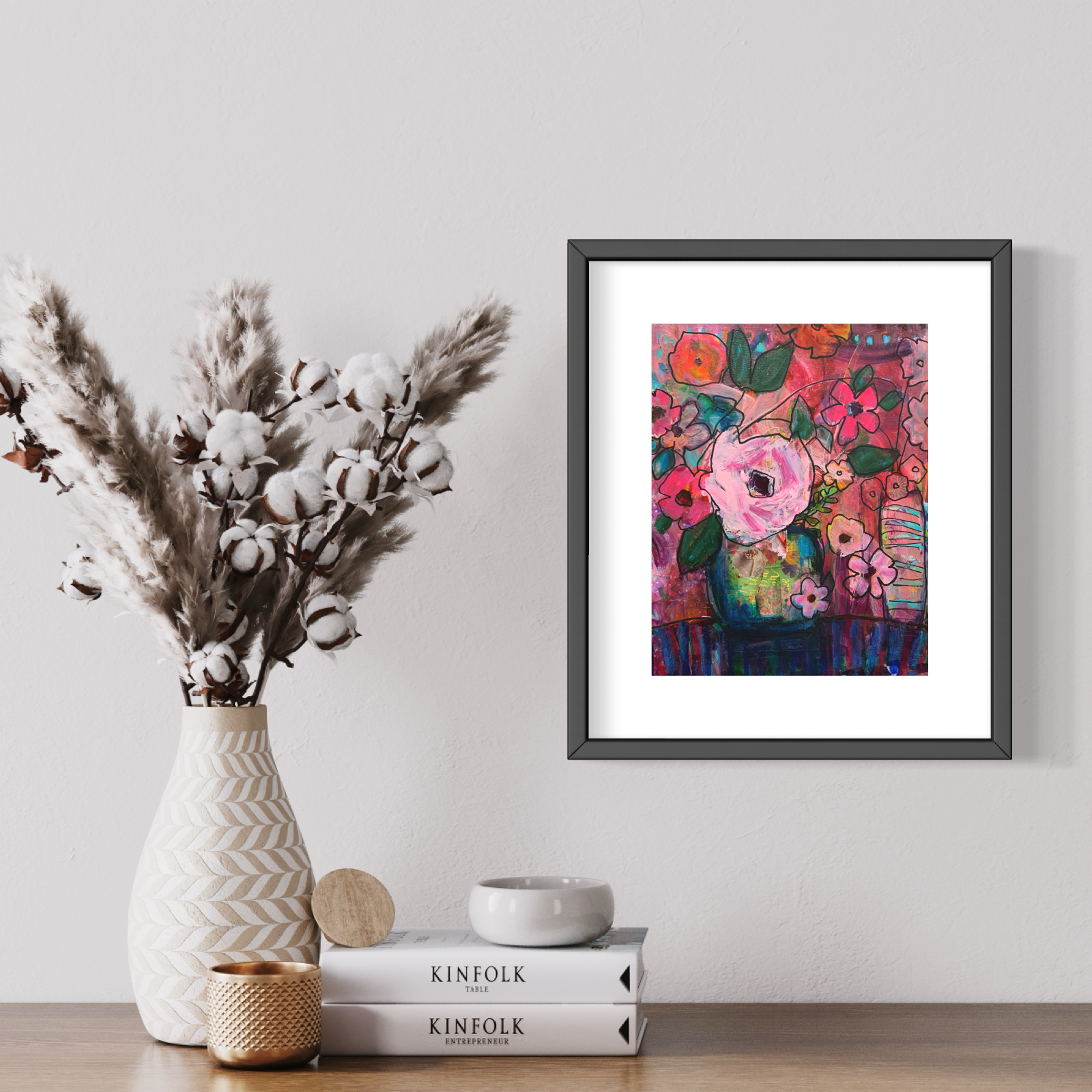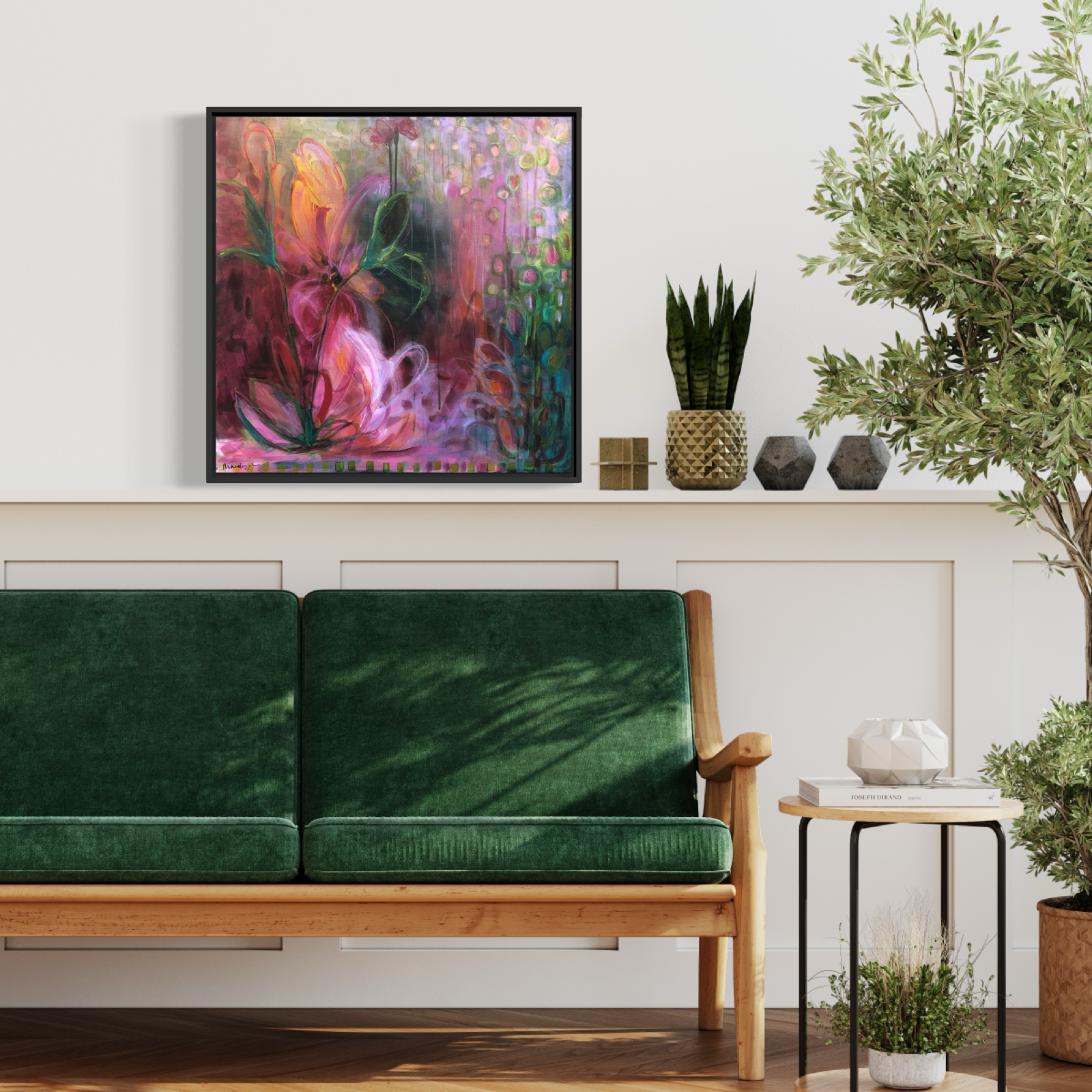To Frame or Not to Frame?
Framing and presentation of artwork can be overwhelming. The wealth of choices can be daunting. At least for me it is. Some assume that an artist would find framing choices easy to navigate or envision, but not always true!
I have a lot of people ask me what I would do with the artwork they buy from me--to frame or not to frame? Should I use white or matting with color? How big should the frame be? And since I love to paint on paper (which requires framing 100% of the time) then I have had to come up with a response that points them in a good direction:
Framing is entirely personal--there is no ‘right’ way to present your new artwork, there’s only ‘your’ way.
Finding a professional or simply a friend that has experience and really good taste to help you consider options is always helpful in breaking down the choices and locating what you prefer.
It is perfectly all right to hang a canvas directly on the wall (some actually prefer this because it fits a more modern setting or simply lets the painting speak for itself), but if you don’t like the way that looks, you have other options! If you go into any framing shop and ask for suggestions or a little education about options, they would be happy to help. And if they aren’t happy to help, go somewhere else ;)
Sometimes framing can be a little pricey, so remember that you can go the cheaper route for right now with off-the-shelf framing until you feel you have the funds or have located exactly what you want to invest in. Using the tool I’m getting ready to show you below is a great way to visualize what you’re thinking about. And you may just decide that the expense of framing is totally worth it when you see the difference it makes with some paintings.
Presentation may reflect your personality, or it may reflect the design of the room and decor. Here are 3 picture examples of my 24”x18” painting “Happiness of the Moment” shown in different presentations on the same wall/same setting. The first is framed with white matting, the second is no framing/canvas hung on the wall, and the third is a floater frame.
For a side view, here is my 24”x24” painting “First Light” shown first dropped into a black floater frame (more about that below) and next is the same painting in a frame with white matting.
Different types of frames can make very different statements. The Floater Frame is a personal favorite of mine. Understated, but substantial, the ‘floater frame’ is so named because the canvas appears to float inside the molding. You can still see the edge of the canvas in the space between it and the frame, and it can easily be used in traditional and modern settings. Pictured to the left here is my 24”x24” painting ‘The Longer Shadows of Fall” inside a floater frame merely sitting on a shelf; casual and elegant at the same time.
The black frame always makes a nice finality around the edge of a painting, but it doesn’t have to be black. Here is a recent 42”x52” commission I did that my clients chose to put in a floater frame that is matte silver. As you can see, it lends a very soft yet elegant quality to the painting; just the perfect touch.
If you are in the Nashville area, Mike Blough is an excellent wood craftsman that makes custom floater frames with different finishes and sizes. He goes above and beyond to ensure that his customers are pleased, so feel free to contact me to pass on your info if you’re considering a custom made floater frame.
A great tool to help you envision your painting is the Smartist App (there are a number of other ones like it as well) which allows you to take a photo of a painting and place it in different interior settings with different framing choices. It’s easy to use and really helps you explore different looks for your painting.
I hope you found this helpful. As I’ve said before, in the end, the most important thing about art is the way you relate to it--the emotional and aesthetic connection--and when you really connect with that, and you realize that there are no ‘right’ decisions, then your intuition can speak and you will be so happy with your choices, whatever they are.
If I can help you find or better understand some art, let me know. I’m happy to help. And let me know if there are any topics you would like me to include in Art Talk!






